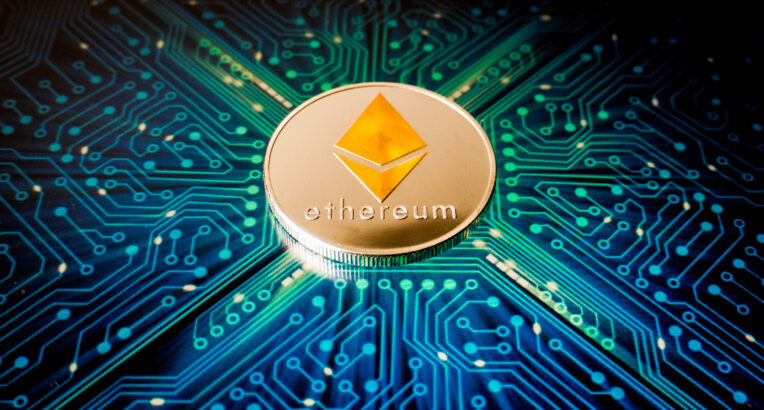Ethereum stands as a pillar in the world of blockchain technology, distinguishing itself as more than just a cryptocurrency platform. Launched with the vision of expanding the utility of blockchain beyond mere financial transactions, Ethereum introduces a programmable blockchain that serves as a foundation for decentralized applications (dApps) and smart contracts. This innovation has not only revolutionized the way we perceive digital contracts but has also fostered a new ecosystem of decentralized finance (DeFi) and various other applications.
At the heart of this ecosystem is Ether (ETH), Ethereum’s native cryptocurrency, which powers transactions and smart contract executions within the network. For enthusiasts and investors alike, managing ETH assets securely necessitates a trx Coin wallet, a digital tool designed to interact seamlessly with the Ethereum blockchain. This article delves into Ethereum’s multifaceted platform, exploring its origins, unique features, and the transformative potential it holds for the future of decentralized technology.
Contents
The Genesis of Ethereum

The inception of Ethereum can be traced back to the visionary mind of Vitalik Buterin, a programmer and co-founder of Bitcoin Magazine, who perceived limitations within Bitcoin’s blockchain that restricted it to financial transactions. Buterin introduced Ethereum in late 2013 with a white paper proposing a platform that could execute more complex contracts and applications through blockchain technology. This innovative concept aimed to extend the utility of blockchain beyond the confines of currency, envisioning a decentralized platform where developers could create versatile applications.
Ethereum’s official development commenced early in 2014, supported by co-founders including Gavin Wood, Charles Hoskinson, and Anthony Di Iorio, who joined Buterin in bringing the vision to life. The team conducted a crowd sale in mid-2014 to fund the project, successfully raising over 18 million dollars in Bitcoin. This event marked one of the largest crowdfunding efforts at the time, demonstrating significant interest and belief in Ethereum’s potential.
The network officially went live on July 30, 2015, with the release of the “Frontier” version, signaling the commencement of the Ethereum blockchain. This launch introduced the world to smart contracts, self-executing contracts with the terms of the agreement directly written into code. Ethereum’s ability to execute these contracts on a decentralized network promised a new era of transparency, efficiency, and security in digital transactions, setting the stage for a revolution in how online agreements are made and enforced.
From its genesis, Ethereum established itself as a dynamic platform with the promise to redefine interactions on the internet. It symbolizes a shift towards a more open, secure, and accessible internet, where the power of blockchain technology is leveraged to create a wide array of decentralized applications and systems.
Understanding Blockchain Technology
Blockchain technology, the foundation upon which Ethereum is built, represents a paradigm shift in the way information and value are exchanged on the internet. At its core, a blockchain is a distributed ledger, a decentralized database that is shared, replicated, and synchronized among the members of a network. Unlike traditional databases governed by a central authority, blockchains are democratic and transparent, with every participant having access to the entire database and its complete history.
The technology employs cryptographic principles to ensure data integrity and security. Each block in the chain contains a number of transactions, and every time a new transaction occurs, a record of that transaction is added to every participant’s ledger. This process is secured through a consensus mechanism, which varies among different blockchains but serves the same purpose: to validate transactions and ensure they are added to the blockchain only after being agreed upon by the network participants.
Ethereum’s blockchain extends the basic concept of blockchain technology by incorporating smart contracts into the mix. These are self-executing contracts with the terms of the agreement directly written into lines of code. The Ethereum Virtual Machine (EVM) executes these contracts in a decentralized manner, ensuring that the outcome is transparent, tamper-proof, and free from the interference of any third party. This execution model not only enhances transaction security but also opens up a realm of possibilities for automating complex agreements, from financial instruments to supply chain management.
What Makes Ethereum Unique?

Ethereum distinguishes itself in the blockchain realm through its pioneering implementation of smart contracts, programmable scripts that facilitate, verify, or enforce the negotiation or performance of an agreement. This feature propels Ethereum beyond being merely a cryptocurrency platform to becoming a comprehensive ecosystem for decentralized applications (dApps).
At the heart of Ethereum’s uniqueness is the Ethereum Virtual Machine (EVM), a powerful, sandboxed virtual stack embedded within each node of the network. The EVM executes smart contracts in an isolated environment, ensuring that code runs exactly as programmed without any possibility of downtime, censorship, fraud, or third-party interference. This level of reliability and security in executing code is unprecedented in the history of digital transactions.
Ethereum’s native programming language, Solidity, allows developers to write sophisticated programs (smart contracts) that can own and manage blockchain assets, automate tasks, and execute complex transactions. This capability has catalyzed a wave of innovation, leading to the development of a diverse range of dApps across finance, gaming, social media, and more, each leveraging the decentralized nature of the blockchain to offer services without the need for a central authority.
Moreover, Ethereum’s transition to Ethereum 2.0, incorporating Proof of Stake (PoS) consensus mechanism, underscores its commitment to scalability, security, and sustainability. This upgrade aims to enhance the network’s throughput and reduce its environmental impact, addressing some of the critical challenges facing blockchain technology today.
Ethereum’s combination of smart contract functionality, a robust virtual machine, and a transition to a more sustainable consensus mechanism positions it uniquely in the blockchain space. It is not just a platform for cryptocurrency transactions but a foundational technology that could redefine how we interact with the digital world, making it truly unique among its peers.
Ethereum’s Cryptocurrency: Ether (ETH)
Ether (ETH) is the lifeblood of the Ethereum ecosystem, serving as the native cryptocurrency that powers operations within the platform. Unlike traditional currencies, ETH is digital, decentralized, and integral to the functioning of the vast network of applications on Ethereum. It is used to compensate participating nodes for computations performed, embodying a form of “fuel” for the execution of smart contracts and transactions on the Ethereum Virtual Machine (EVM).
Beyond its utility within the Ethereum network, Ether has emerged as a significant asset in the cryptocurrency market, appreciated by investors for its potential for growth and as a hedge against traditional financial volatility. The demand for ETH is driven not only by speculation but also by its utility in accessing and interacting with dApps, participating in decentralized finance (DeFi) platforms, and facilitating NFT (Non-Fungible Token) transactions.
The issuance of Ether was initially conducted through a public sale, setting the stage for its distribution among developers, investors, and users. Unlike Bitcoin, Ethereum does not have a hard cap on the total supply of ETH, but with the introduction of EIP-1559 (Ethereum Improvement Proposal), a mechanism was implemented to burn a portion of transaction fees, introducing a deflationary aspect to its economy.
ETH transactions are secured through Ethereum’s current proof-of-work (PoW) consensus mechanism, transitioning to proof-of-stake (PoS) with Ethereum 2.0. This shift aims not only to decrease the environmental impact of Ethereum but also to increase transaction throughput and reduce fees, making ETH transactions more efficient and sustainable.
Decentralized Applications (dApps)

Decentralized Applications (dApps) represent a groundbreaking shift in the digital world, enabled by the Ethereum platform. These applications operate on a blockchain or peer-to-peer network of computers, eliminating the need for centralized intermediaries and offering unprecedented levels of transparency, security, and resistance to censorship. Ethereum, with its flexible smart contract functionality, has become the leading ecosystem for dApp development, fostering a wide array of applications that disrupt traditional sectors.
dApps on Ethereum are powered by smart contracts, self-executing contracts with the terms of the agreement directly written into code. This automation of agreement terms and executions allows dApps to run exactly as programmed without any possibility of downtime, fraud, or third-party interference. The spectrum of dApps is vast, encompassing areas such as finance, where decentralized finance (DeFi) platforms offer lending, borrowing, and trading services without the need for traditional financial institutions. In the arts and entertainment sector, dApps facilitate the creation, sale, and ownership transfer of digital art and collectibles through Non-Fungible Tokens (NFTs).
The open-source nature of dApp development on Ethereum encourages innovation and collaboration, significantly lowering the barriers to entry for developers. This democratization of application development has led to a surge in the number and variety of dApps available, each contributing to the robustness and diversity of the Ethereum ecosystem.
Despite their potential, dApps face challenges such as scalability, user experience, and regulatory compliance, which the Ethereum community actively addresses through continuous improvements and the upcoming transition to Ethereum 2.0. This evolution aims to enhance the platform’s capacity to support a greater number of dApps with improved efficiency and reduced costs, further solidifying Ethereum’s position as the foundation for the next generation of internet applications.
Ethereum 2.0 and the Future
Ethereum 2.0, also known as Eth2 or Serenity, marks a significant evolution in the Ethereum blockchain, aiming to address its current limitations regarding scalability, security, and sustainability. This ambitious upgrade is set to transition the network from a proof-of-work (PoW) to a proof-of-stake (PoS) consensus mechanism, fundamentally altering how transactions are processed and validated on the Ethereum blockchain.
The shift to PoS through the Beacon Chain, already live as a parallel blockchain, introduces staking to the Ethereum ecosystem. This change allows validators to participate in the network by staking ETH, contributing to network security and consensus through a more energy-efficient process compared to the computationally intensive PoW. The transition is expected to drastically reduce Ethereum’s energy consumption, aligning with broader environmental sustainability goals.
Scalability is another focal point of Ethereum 2.0, with the introduction of shard chains planned in subsequent phases. These shard chains will spread the network’s load across 64 new chains, increasing throughput and reducing congestion. This scalability solution is poised to enhance the performance of dApps and make the network more accessible for users and developers, supporting a higher volume of transactions and interactions.
The Ethereum 2.0 upgrade also promises improvements in network security, leveraging the collective stake of validators to guard against attacks. The PoS model adds financial disincentives for malicious behavior, making the network more secure and resilient.
Looking ahead, Ethereum 2.0 sets the stage for a more scalable, secure, and sustainable blockchain ecosystem. These enhancements are anticipated to solidify Ethereum’s position as the leading platform for decentralized applications and smart contracts, opening new avenues for innovation and growth in the decentralized web. The transition to Ethereum 2.0 is a step towards realizing the full potential of blockchain technology, preparing Ethereum to meet the future demands of a decentralized digital economy.
The immutability of blockchain records is another cornerstone of its technology. Once a transaction is confirmed and added to a block, it is virtually impossible to alter. This characteristic ensures a trustless environment where parties can transact directly without the need for intermediaries, reducing potential fraud and lowering transaction costs.
